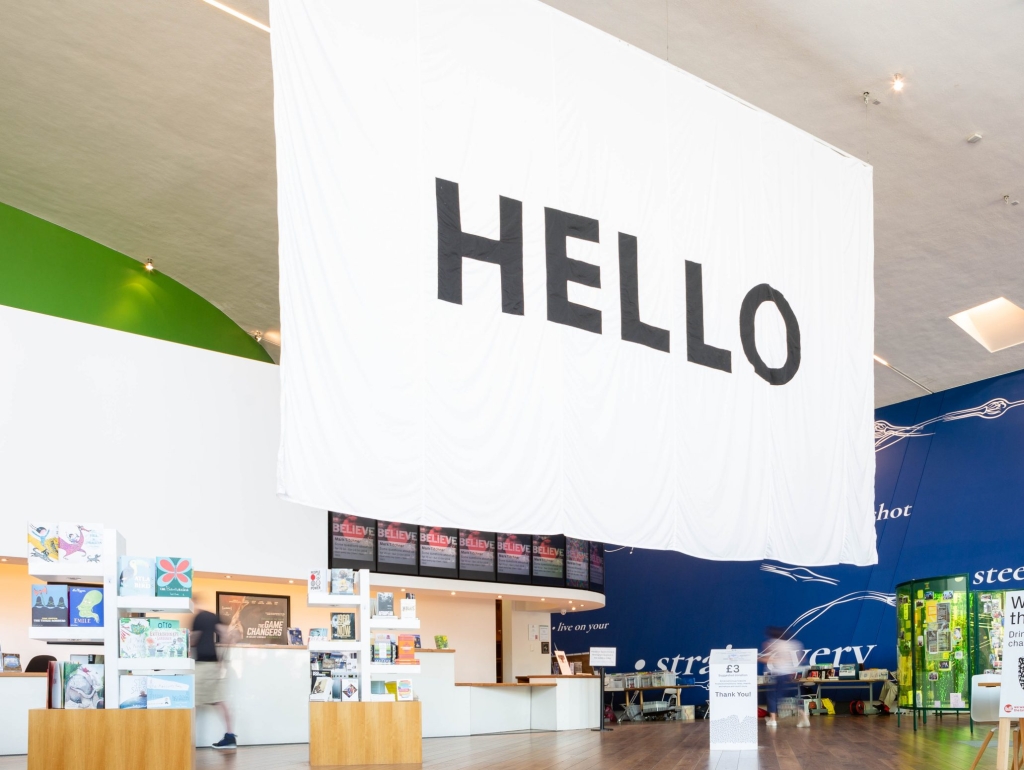But who is Zhang Enli?
Zhang Enli was born in 1965 in Jilin Province, China and lives and works in Shanghai. He graduated from the Arts & Design Institute of Wuxi Technical University, China in 1989, and teaches at the Arts and Design Institute of Donghua University.
Zhang’s work is heavily marked by the personal transition and move he made 20 years ago from the provincial town of Jilin in the north of China to Shanghai. By focusing on ordinary objects and the everyday in his work, the artist represents the contrast between the small city and the sprawling metropolis – between two differing states of mind and environment.
Unlike many of his Chinese contemporaries, Zhang Enli’s practice focuses on the familiar and often overlooked everyday objects and environments the artist encounters on a daily basis, viewed from a unique perspective. His works are mostly composed in series, such as containers, humans or trees that are the focus for his Firstsite exhibition.
Trees are rare subjects in Chinese contemporary paintings, and Zhang Enli adopts unconventional methods in which to portray them: in order to render the trees, he takes pictures of trees at close proximity, and later in his studio, he paints parts of them with disciplined analytical attention, choosing to paint trunks with incomplete branches and foliage without trunks. However, these parts are not chosen for any symbolic purpose, but merely to show how they are, since there is beauty in all of them, not only in those that are believed to bear special grace and to allude to specific feelings or meanings.
The fluid traits that Zhang Enli used to outline the human figures imbue the trunks with energy, whilst the semi-transparent brushstrokes of the paintings are used to show the ephemeral character of the foliage. Painting with these thin washes of pigment, which often leaves traces of turpentine dripping down the canvas, he achieves a sophistication and richness that balances the simplicity of his technique and subject matter.
The Firstsite commission will see Zhang cover the gallery’s 140-metre curving wall with swathes of pulsating colour, washed, scrubbed and stroked into place with expressive brushstrokes. The scale of the work, which sees the artist deliberately blurring his abstract and figurative practices – many Chinese and British trees will be featured – draws the viewer into an imaginary environment, inviting them to consider not just the spectacle of the painting, which is rendered in watercolour, but also the aesthetic enquiries behind its creation.
Zhang began this series in 2007 – other works have been seen at London’s Institute of Contemporary Art (ICA), and the Muse Duarte Contemporaneity di Villa Croce, Genoa – with the aim of challenging and ultimately conflating the relationship that exists between an artwork and the space it inhabits.
The same stylistic trajectory of the ‘Space Painting’ is manifest in the ten figurative and abstract paintings that feature in the show. The figurative works are inspired by the painter and calligrapher Jin Nong (1687-1764) whose own depictions of branches and blossoms, like Zhang’s, often waved in the wind. Rendered in oil, the artist’s mark- making is invariably underpinned by a faint, pencil-drawn grid. This structures the rapid expressionistic gestures, coiled tendrils, perforated sheets and majestic tree trunks that are depicted.
In Red-Green Brushwork (2016), for example, sketchy patches of carnelian red, forest green and muted, rusty orange are delineated across the canvas. The grid is still discernible amid chaotic brushstrokes that swirl and blend into one another, with watery rivulets of pigment travelling down the surface plane, creating further, unpredictable marks.
In contrast, Tension 1 (2013), in shades of teal and juniper green, channels a mass of tangled lines wrapped around two thin brown arches. These are seemingly pulled together under the dynamic tension of what could be coils of vine, water-hoses or string. These same lines reappear in The Transparent Fabrics (2014), threading through the holes of a translucent turquoise veil, and again in The Tree Stump (2) (2015), where they loosely fall from and curl around severed branches.
In all of these works, from the ‘Space Painting’ to the joyful, colourful abstracts and carefully-rendered figurative canvases, Zhang references Buddhist philosophy, and the way it mediates ‘sentience’ (the ability to feel or perceive) and the ‘material’ (our spatial relationship to our environment), exploring what unites humanity rather than what sets it apart.




